CQ17: Theoretical models on creativity, where to start?
 There are as many theoretical models on creativity as models in the first episode of a new season of America’s Next Top Model. Fortunately, we have a jury that has reviewed models for us and clustered them into five types of classifications Kozbelt, et al. (2010). What is even better for us is that Kozbelt, et al. (2010) made a table with an overview and leading examples of these classifications.
There are as many theoretical models on creativity as models in the first episode of a new season of America’s Next Top Model. Fortunately, we have a jury that has reviewed models for us and clustered them into five types of classifications Kozbelt, et al. (2010). What is even better for us is that Kozbelt, et al. (2010) made a table with an overview and leading examples of these classifications.
I will start with an introduction to these five types of classifications.
Then I will copy the table from Kozbelt, et al. (2010). Bear in mind that this table is far from complete. There are more theories on creativity than the ones mentions by Kozbelt, et al. (2010). Some of which I already discussed or mentioned in other articles, some of which I will discuss in articles yet to come. And there are theoretical models on creativity that are not part of this quartet.
Finally, I will elaborate shortly on the theoretical models you can expect in this fourth chapter of the CreativityQuartet2020.
Five types of classifications
Kozbelt (2011) and Kozbelt et al. (2010) identified five types of classifications in which Western creativity theories can be placed. These classifications can also be used for non-Western theories on creativity but in this quartet focusses on The West.
The five frameworks are (Kozbelt, 2011; Kozbelt, et al., 2010):
- Scientific – Metaphoric
- Applied – Theoretical
- Mini-c, Little-c, Pro-C or Big-C
- 4-6 Ps on Creativity,
- 10 different theoretical categories.
Scientific – Metaphoric
Scientific theories are more oriented on empirical research and to develop computational models to be able to formally say something on creativity. Metaphoric theories are more speculative. They vary in complexity and interdisciplinarity can also be the inspiration for more scientific research. (Kozbelt, et al., 2010).
Applied – Theoretical
Some theories have the goal to be purely theoretical, others have the goal to be more pragmatic (Kozbelt, 2011). In general, some research disciplines lends itself better for applied theories (f.e. design, business) and others for theoretical theories (f.e. philosophy).
Mini-, Little-, Pro-, or Big-C
We have theories on a different level of creativeness (also see CQ14). These different ‘Cs’ are named the ‘magnitude of creativity’ (Kozbelt, et al., 2010). From the smallest step of personal growth (mini-c) to the biggest step of creativity in terms of society (Big-C): the Einsteins and the Mozarts among us. (Kozbelt, 2011; Kozbelt et al., 2010).
6 Ps of Creativity
In CQ15 I already mentioned the 4P of creativity introduced by Mel Rhodes (Rhodes, 1961):
- Person
- Product
- Process
- Press
Rhodes made this distinction based on the definitions of creativity he found in his quest to answer the question like so many of us: What is Creativity? He found that these definitions could be clustered into for ‘strands’ (Rhodes, 1961).
Later, two other Ps were added to this model: persuasion and potential. The fifth P, Persuasion was added by Dean Keith Simonton (Runco & Kim, 2011). Simonton took the sociopsychological approach. Persuasion is about how any creative achievement persuaded others in the way they think (Runco & Kim, 2011). The sixth P, potential, was added (I don’t know by whom) because some creativity perspectives from the other Ps were more on potential and others on performance (Runco & Kim, 2011). Runco & Kim (2011) also argue that these six Ps may intersect. For example, when we discuss the creations from Einstein we are talking about ‘product’, ‘person’ and, ‘persuasion’.
As we will see in the table below, we have theoretical models on each of these six Ps, and we have models that include more than one P.
Theoretical categories
The fifth classification is on theoretical categories. Kozbelt, et al. (2010) describe ten categories, see below. Ten categories, ten different perspectives on creativity. The categories are:
- Developmental theories
- Psychometric theories
- Economic theories
- Stage- and componential theories
- Cognitive theories
- Problem solving- and expertise based theories
- Problem finding theories
- Evolutionary theories
- Typological theories
- System theories
I think there are even more theories. For example, I miss other disciplines like philosophy, theology, business management and design.
Table 2.1 Kozbelt et al. (2010)
The following table is an exact copy of Table 2.1 from Kozbelt et al. (2010). Of course, I adapted it to the lay-out* of this article. But the content and structure are exactly quoted Kozbelt et al. (2010). At the end of this article, you will find all the references that Kozbelt et al. (2010) refer to in this table.
* I know, the table is difficult to read due to the lay-out. I’m working on fixing that.
| Categories | Primary Assertion | Key concepts | Six P’s focus | Level of Magnitude | Major studies and examples |
| Developmental | Creativity develops over time (from potential to achievement); mediated by an interaction of persons and environment. |
|
Person, Place, Potential, & Product | Mini-c to Pro-c |
Helson (1990) Subotnik & Arnold (1996) Albert & Runco (1989)
|
| Psychometric | Creativity can be measured reliability and validly; differentiating it from related constructs (IQ) and highlighting its domain-specific nature. |
Reliable and valid measurements Discriminant validity Thresholds Domain specificity |
Primarily product | Little-c to Big-C |
Guilford (1968) Wallach & Kogan (1965) |
| Economic | Creative ideation and behavior is influenced by “market focus” and cost-benefit-analyses. |
Influence of macro-level factors Psychoeconomic perspective Markets of creativity Investment decisions |
Person, Place, Product, Persuasion | Little-c to Big-c |
Rubenson & Runco (1992, 1995) Florida (2002) Sternberg & Lubart (1992, 1995) |
| Stage & Componential Process | Creative expression proceeds through a series of stages or components; the process can have linear and recursive elements. |
Preparation stages Incubation and insight Verification and evaluation Component mechanisms |
Primarily Process | Mini-c to Big-C |
Wallas (1926) Runco & Chand (1995) Amabile (1999) |
| Cognitive | Ideational thought processes are foundational to creative persons and accomplishments. |
Remote association Divergent/convergent thinking Conceptual combination, expansion Metaphorical thinking, imagery Metacognitive processes |
Person & Process | Little-c to Big-C |
Mednick (1962) Guilford (1968) Finke, Ward & Smith (1992) |
| Problem-Solving & Expertise-based | Creative solutions to ill-defined problems result from a rational process, which relies on general cognitive processes and domain expertise. |
Ill-defined problems Cognitive, computational approach Expertise-based approaches Problem representation & heuristics |
Person, Process, & Product | Little-c to Big-C |
Ericsson (1990) Simon (1981, 1989) Weisberg (1999, 2006) |
| Problem Finding | Creative people proactively engage in a subjective and exploratory process of identifying problems to be solved. |
Subjective creative processes Exploratory behaviors On-lin discovery |
Proces, Person, & Potential | Primarily Mini-c |
Getzels & Csikszentmihaly (1976) Runco (1994) |
| Evolutionary (Darwinian) | Eminent creativity results from the evolutionary-like processes of blind generation and selective retention. |
Chance-configuration Blind generation of ideas Selective retention of ideas Equal-odds rule Social judgment and chance |
Person, Process, Place, & Product | Primarily Big-C |
Campbell (1960) Simonton (1988, 1997) |
| Typological | Creators vary along key individual differences, which are related to both macro- and micro-level factors and can be classified via typologies. |
Individual differences Categories of creators Seekers versus finders Integrate multiple levels of analysis |
Primarily Person; but also Process, Product, & Place. | Little-c to Big-C |
Galenson (2001, 2006) Kozbelt (2008c) |
| Systems | Creativity results from a complex system of interacting and interrelated factors |
Evolving systems Network of enterprises Domain and field Gatekeepers Collaborative Creativity Chaos and Complexity |
Varying emphasis across all P’s. | Little-c to Big-C |
Gruber (1981a) Csikszentmihaly (1998a) Sawyer (2006) |
What can we learn from this table?
Firstly, I think this table is a great starting point for this chapter on theoretical models on creativity. It’s unfortunate that they mention 26 studies and not 4 or 5, this complicates matters in my choice what models to take with me to the next round.
Secondly, logically this table is made for scholars, and it shows. What does the ‘psychoeconomic perspective’ or ‘cognitive, computational approach’ on creativity mean to you? I can imagine that many of these primary assertions and key concepts are strange to practitioners
Thirdly, I miss the applied-theoretical column and the scientific-metaphoric column in the table.
Search for yourself
In the reference list at the end of this article, I made a category with all the references from Table 2.1. from Kozbelt et al. (2010). I encourage you to start your search. Try to find these major studies and examples of the theory you are interested in. Use the keywords to start your online search. Check out article CQ12 for tips on how to find scientific sources if you don’t have access to most of them. If you see something interesting, go for it!
The models I choose to elaborate on
I will start with Graham Wallas’ association process. I already promised to give you Wallas (1926) description of this association process. His book The Art of Thought has been both influential in theory and practice. Open any serious book on creativity, from psychology to design, and you will find Wallas in the reference list. Ever read a blog on ‘Why we are most creative in the shower’, or something with a similar title, that comes from Wallas’ theory. Maybe you have heard of the ‘creative process’ in terms of Preparation, Incubation, Illumination, Verification. That’s Wallas.
Next up is the componential model from Teresa Amabile (Amabile, 1996). Amabile was at Harvard Business School (HBS). I say ‘was’ because I think retired recently. Since HBS has a powerful status in the world of business, her research is relatively known to the world. In this article, I will review her model.
Then, I will discuss the Creative Cognition Approach from Finke, Ward, and Smith (1992). I believe this model describes the principle behind a stream of creativity techniques that we use in workshops. However, I’m not sure. Dedicating an article to this model will give me a chance to figure it out and hopefully we’ll find ourselves enlightened.
And as the final article in this chapter, I will explain Weisberg (2006) Cognitive Analytical Model, not only because I promised to do so in previous articles. But also because I think the model is refreshingly different from the above theories. I think his model will give creativity professionals something to think about.
That’s all for this week folks. Remember to check the references from table 2.1 (Kozbelt, et al. 2010)! As usual, you will also find the cards for the next weeks and my references below.
Willemijn
The creativity quartet combines my knowledge of and experience with creativity. Just like any other person I have experience with creativity as long as I live, but more deliberate when I started studying Industrial Design Engineering in 2001. I have over fifteen experience in facilitating and training creativity. My interest in creativity theory started in 2015. And I’m currently looking into doing promotional research on creating an overview of creativity theories. What you read in the articles are my interpretations of the truth. If you have something to add to that, please do so. Ending with my favorite quote on creativity by Maya Angelou:
“You can never use up creativity. The more you use, the more you have.”
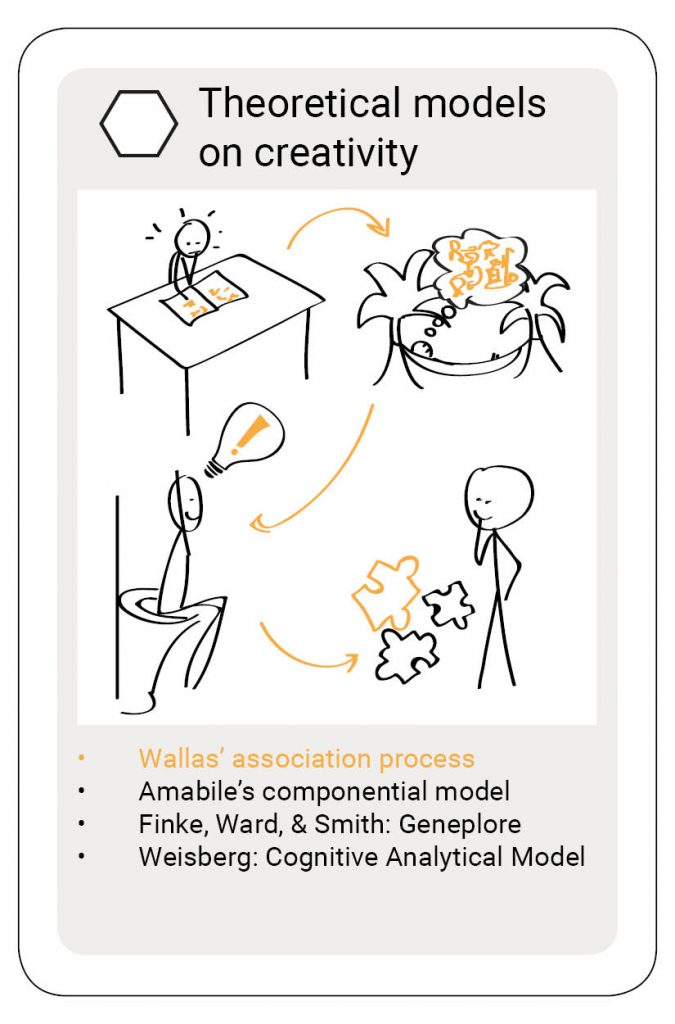
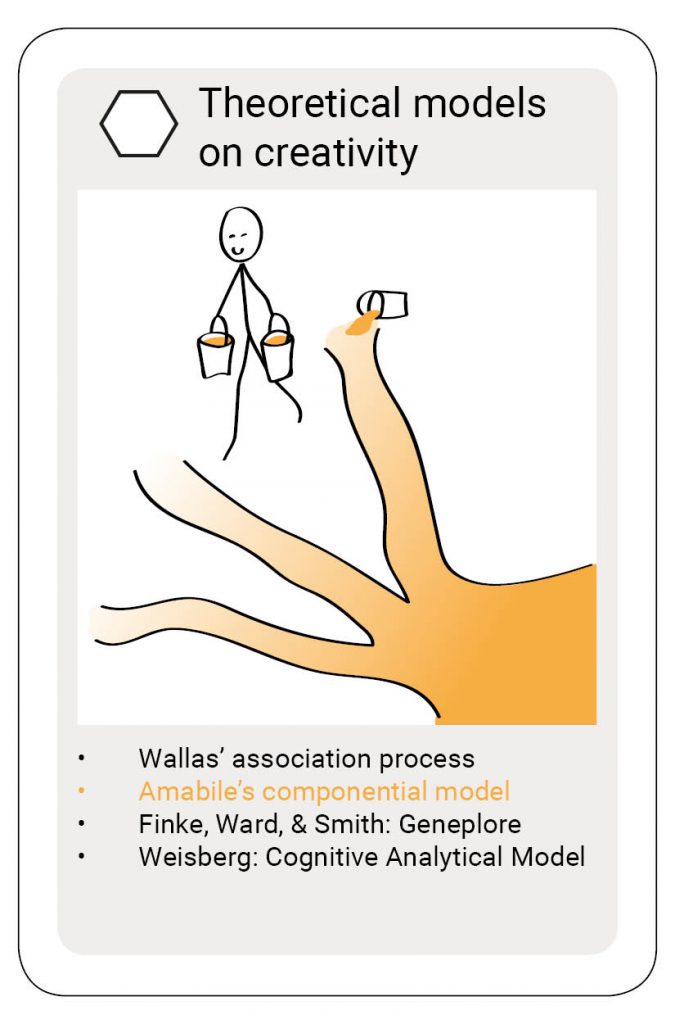
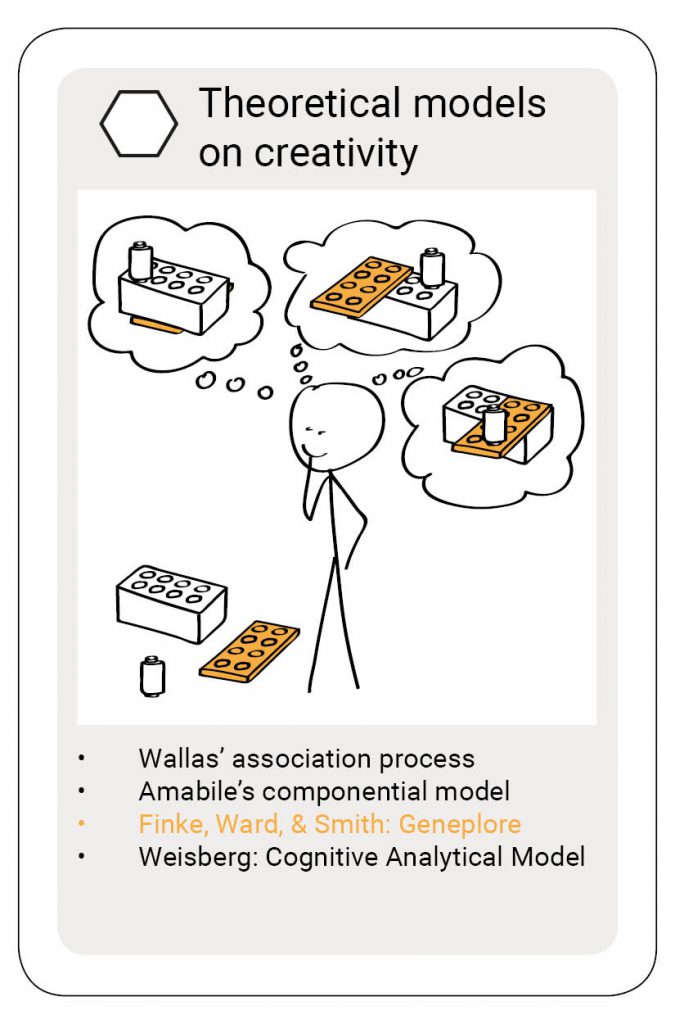
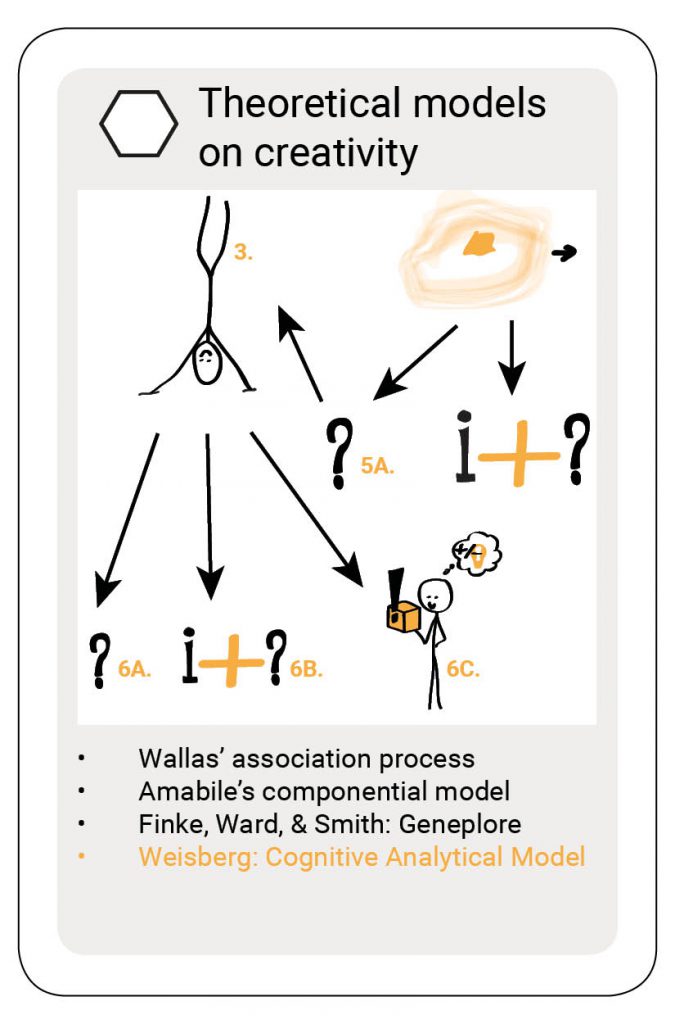
References from Table 2.1 (Kozbelt, et al., 2011)
- Albert, R. S., & Runco M. A. (1989). Independence and cognitive ability in gifted and exceptionally gifted boys. Journal of Youth and Adolescence, 18, 221-230.
- Amabile, T. M. (1999). Consensual assessment. In M. A. Runco & S. Pritzker (Eds.), Encyclopedia of creativity (pp. 346-349). San Diego, CA: Academic Press.
- Campbell, D. T. (1960). Blind generation and selective retention in creative thought as in other thought processes. Psychological Review, 67, 380-400.
- Csikszentmihaly, M. (1998a). Society, culture, and person: A systems view of creativity. In R. J. Sternberg (ed.), The nature of creativity: Contemporary psychological perspectives (pp 325-228) New York: Cambridge University Press.
- Ericsson, K. A. (1999). Creative expertise as superior reproducible performance: Innovative and flexible aspects of expert performance. Psychological Inquiry, 10, 329-333.
- Finke, R. A., Ward, T. B., & Smith, S. M. (1992) Creative cognition: Theory, research, and applications. Cambridge, MA: MIT Press.
- Florida, R. (2002). The rise of the creative class: And how it’s transforming, work, leisure, community and everyday life. New York: Basic Books.
- Galenson, D. W. (2001). Painting outside the lines: Patterns of creativity in modern art. Cambridge, MA: Harvard University Press.
- Galenson, D. W. (2006). Old masters and young geniuses: The two life cycles of artistic creativity. Princeton, NJ: Princeton University Press.
- Getzels, J. W., & Csikszentmihaly, M. (1976). The creative vision: A longitudinal study of problem finding in art. New York: Wiley.
- Gruber, H. E. (1981a). Darwin on man: A psychological study of scientific creativity (Rev. ed.). Chicago: University of Chicago Press. (Original work published 1974)
- Guilford (1968). Creativity, intelligence, and their educational implications. San Diego, CA: EDITS/Knapp.
- Helson, R. (1990). A longitudinal study of creative personality in women. Creative Research Journal, 12, 89-101.
- Kozbelt, A. (2008c). Longitudinal hit ratios of classical composers: Reconciling “Darwinian” and expertise acquisition perspectives of lifespan creativity. Psychology of Aesthetics, Creativity, and the Arts, 2, 221-235.
- Mednick. S. A. (1962). The associative basis of the creative process. Psychological Review, 69, 220-232.
- Rubenson, D. L., & Runco, M. A. (1992). The psychoeconomic approach to creativity. New Ideas in Psychology, 10, 131-147.
- Rubenson, D. L., & Runco, M. A. (1992). The psychoeconomic view of creative work in groups and organizations. Creativity and Innovation Management, 4, 232-241.
- Runco, M. A. (Ed.). (1994). Problem finding, problem solving, and creativity. Norwood, NJ: Ablex.
- Runco, M. A., & Chand, I. (1995). Cognition and creativity. Educational Psychology Review, 7, 243-267.
- Sawyer, R. K. (2006). Explaining creativity: The science of human innovation. New York: Oxford University Press.
- Simon, H. A. (1981). The sciences of the artificial (2nd ed.). Cambridge, MA: MIT Press.
- Simon, H. A. (1989). The scientist as problem solver. In D. Klahr & K. Kotovsky (eds.), Complex information processing: The impact of Herbert A. Simon (pp. 375-398). Hillsdale, NJ: Erlbaum.
- Simonton, D. K. (1988). Scientific genius. New York: Cambridge University Press.
- Simonton, D. K. (1997). Origins of genius: Darwinian perspectives on creativity. New York: Oxford University Press.
- Sternberg, R. J., & Lubart, T. I. (1992). Buy low and sell high: An investment approach to creativity. Current Directions in Psychological Science, 1, 1-5.
- Sternberg, R. J., & Lubart, T. I. (1995). Defying the crowd: Cultivating creativity in a culture of conformity. New York: Free Press.
- Subotnik, R. F., & Arnold, K. D. (1996). Success and sacrifice: The costs of talent fulfillment for women in science. In K. D. Arnold, K. D. Noble, & R. F. Subotnik (eds.), Remarkable women: Perspective on female talent development (pp. 263-280). Cresskill, NJ: Hampton Press.
- Wallach, M. A., & Kogan, N. (1965). Modes of thinking in young children. New York: Holt, Reinhart, & Winston.
- Wallas, G. (1926). The art of thought. New York: Harcourt Brace and World.
- Weisberg, R. W. (1999). Creativity and knowledge: A challenge to theories. In R. J. Sternberg (Ed.), Handbook of creativity (pp. 226-250). New York: Cambridge University Press.
- Weisberg, R. W. (2006). Creativity: Understanding Innovation in Problem Solving, Science, Invention, and the Arts. Hoboken: NJ: Wiley.
References used for this article
- Amabile, T. M. (1996). Creativity in Context. New York: Avalon publishing.
- Finke, R. A., Ward, T. B., & Smith, S. M. (1992) Creative cognition: Theory, research, and applications. Cambridge, MA: MIT Press.
- Kotzbelt, A., Beghetto, R. A., and Runco, M. A. (2010). Theories of Creativity. In Kaufman J. C., and Sternberg, R. J. (Eds.). The Cambridge Handbook of Creativity, pp.20-47. New York: Cambridge University Press.
- Kotzbelt, A. (2011). Theories of Creativity. In Encyclopedia of Creativity: Second Edition, Runco, M. A. and Pritzker S.R. (Eds.). London, UK: Academic Press, 2011, Vol 2. pp. 473–479.
- Rhodes, M. (1961). An analysis of creativity. Phi Delta Kappan, 42, pp. 305-310.
- Runco, MA, Kim, D. The Four Ps of Creativity: Person, Product, Process, and Press. In Encyclopedia of Creativity: Second Edition, Runco, M. A. and Pritzker S.R. (Eds.). London, UK: Academic Press, 2011, Vol 1. pp. 534–537.
- Wallas, G. (1926/2014). Art of Thought. Kent: Solis press.
- Weisberg, R. W. (2006). Creativity: Understanding Innovation in Problem Solving, Science, Invention, and the Arts. Hoboken: NJ: Wiley.
Tags:
SUGGESTIONS FOR FURTHER READING
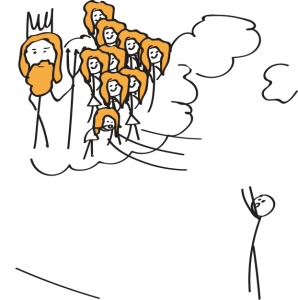
CQ8: Divine inspiration
Inspiration is a Gift from the Gods. Right. Let’s start our historical review with the Big 3: Socrates, Plato, and Aristotle. I will shortly mention t
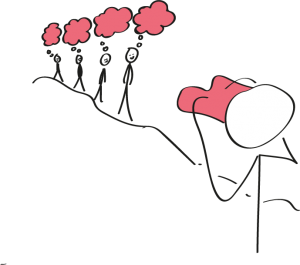
CQ7: History is awesome!
If you would tell me twenty years ago that I would say that history is awesome, I would have kept you for a fool. I was born in the 80s and I grew up
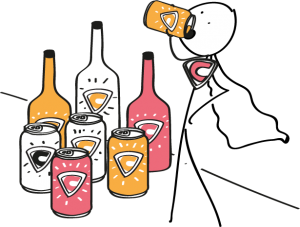
CQ22: Deliberate creativity methods
Can we be creative by choice? The word ‘deliberate’ implies we can. In this chapter I will describe four methods all based on the idea that we can be
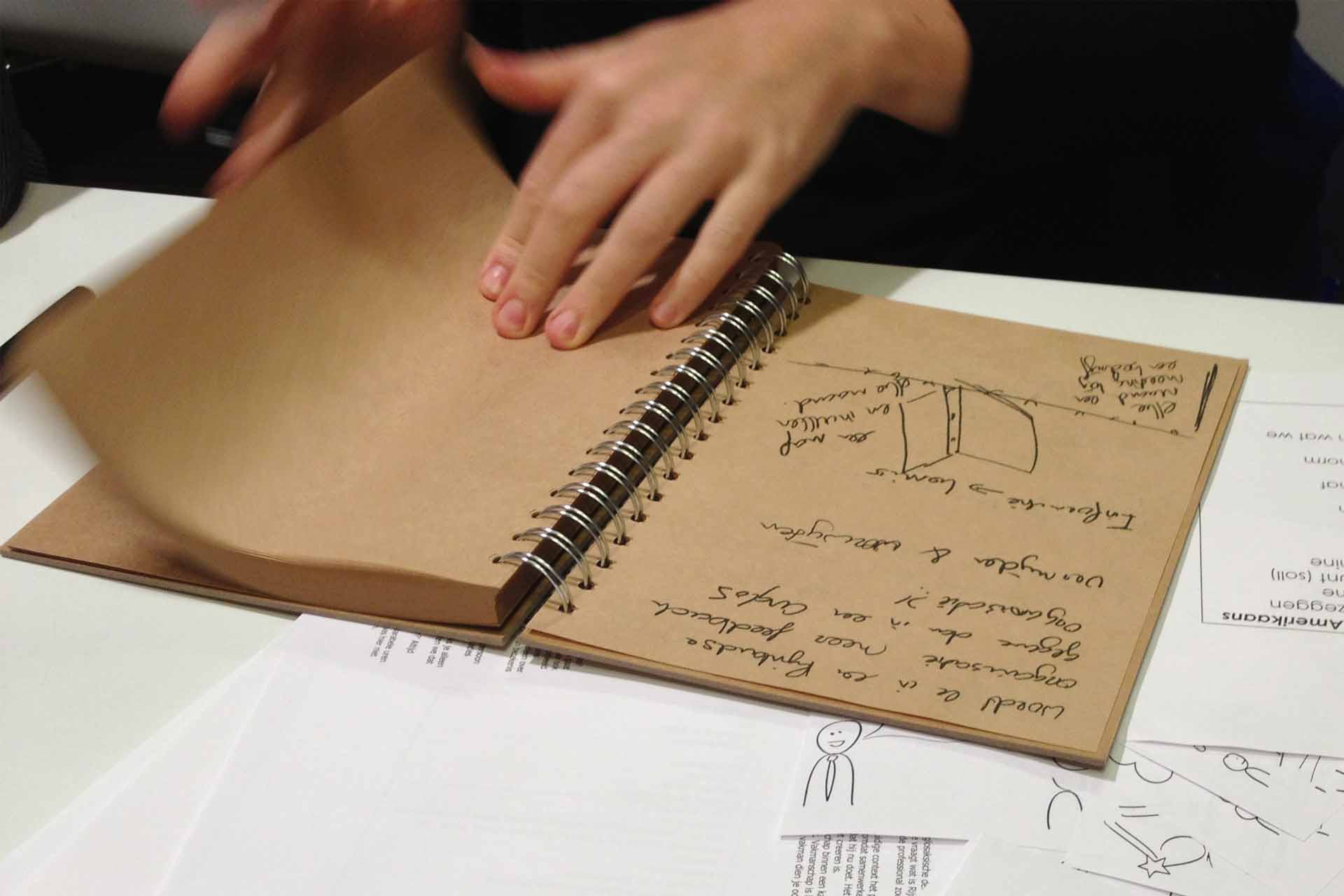
Title photo
Inspiration for inspiration
Would you like to receive the Creativity Quartet 2020 as inspiration? Think about how you can inspire us. For example, we have a coffee, you send us a book or article, link us to a person, point us to a website, etc. Leave your name and e-mail address and we’ll contact you for further information. We will not use your e-mail address to send you offers and won’t give away your information to other parties.



